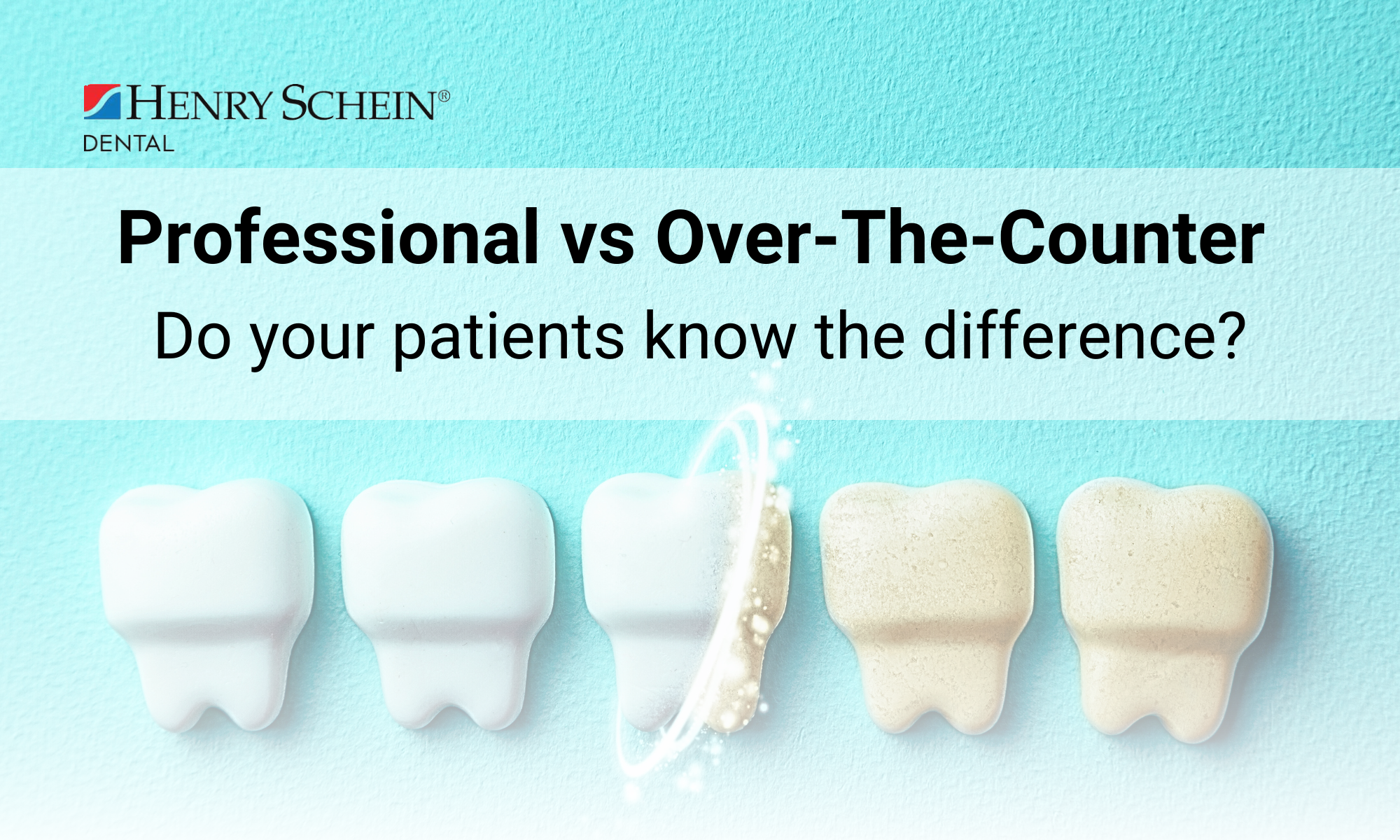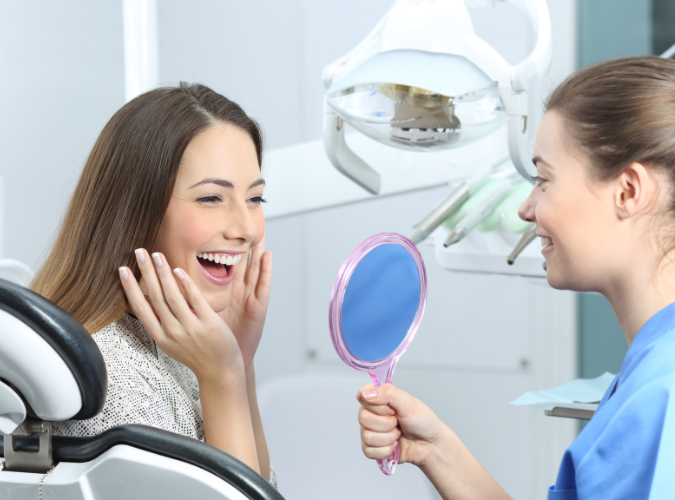Are patient misconceptions hurting your whitening revenue?

A lot of patients will have tried over-the-counter teeth whitening treatments, picked up from their local supermarket and promising professional-grade results – results which inevitably aren’t delivered.
Keeping your patients informed about the differences between over-the-counter solutions and professional whitening treatments offered in a dental practice can save patients from spending money on ineffective or limited over-the-counter whitening products. Not only that, it may also drum up fresh business for your practice when patients understand that just because over-the-counter methods didn’t work, doesn’t mean professional solutions will fail.
However, before you can do this, it’s important that the whitening your practice offers is safe and effective. One of the best ways to ensure this is by keeping up with the latest whitening products on the market – check out the Whitening Shop to see the latest in dental whitening.
Professional whitening vs over-the-counter
Make sure your patients understand why professional whitening is the better option.
- Higher efficacy: Professional-grade whitening agents are more potent and effective compared to OTC products, which are limited to very low concentrations of peroxide.
- Customisation: Custom-fitted trays and tailored treatment plans ensure even application and better results.
- Flexibility: With options available ranging from in-practice treatments, take-home solutions, whitening strips, and full smile makeovers, professional treatments deliver a far more comprehensive range of options. Instead of being stuck with what’s available, patients have the flexibility to select the treatment they really want.
- Safety: Professional supervision minimises risks associated with misuse or overuse of whitening agents, which can lead to sensitivity, irritation, or damage to the teeth and gums.
Head to our whitening shop to find comprehensive whitening ranges that will leave you ready to help every patient, no matter their whitening needs.
Hydrogen peroxide vs. carbamide peroxide
 As a dentist, you know that tooth whitening relies on the effective use of bleaching agents, primarily hydrogen peroxide and carbamide peroxide. But do your patients?
As a dentist, you know that tooth whitening relies on the effective use of bleaching agents, primarily hydrogen peroxide and carbamide peroxide. But do your patients?
In order for over-the-counter solutions to be safe for sale, the concentrations of these key whitening agents are diluted and much less effective. Make sure your patients are aware of this, so that they understand that the low-cost of over-the-counter solutions comes at the true price of an often low, ineffective, or short-lived result. If the product is ineffective, then they are spending money unnecessarily.
Understanding these agents and their differences is crucial for selecting the appropriate treatment for each patient, and the more tailored the treatment you can offer to an individuals needs, the more likely they will be to take up the treatment.
- Hydrogen peroxide: This powerful bleaching agent releases oxygen molecules that break down stains on the enamel and dentine. It acts quickly and is commonly used in both in-office treatments (with concentrations up to 6%) and in lower concentrations for some take-home kits. Ideal for patients seeking rapid results, hydrogen peroxide is effective but may increase sensitivity for some individuals.
- Carbamide peroxide: This agent decomposes into hydrogen peroxide and urea, with the hydrogen peroxide being the active component. It acts more slowly, making it suitable for take-home kits with prolonged application periods. Typically available in a 16% concentrations, carbamide peroxide is gentler on the teeth and gums, reducing the risk of sensitivity and irritation, making it suitable for patients with sensitive teeth or those preferring gradual whitening.
Suitability for different patients
- Rapid results: Hydrogen peroxide is the go-to for in-office treatments or patients who want fast results. Its quick action is ideal for those preparing for events or needing significant whitening in a short time.
- Sensitive teeth: Carbamide peroxide is preferable for patients with a history of sensitivity. Its slower release of hydrogen peroxide minimises discomfort, making it a safer choice for at-home use over extended periods.
- Customisation: Assess each patient's oral health, history, and expectations to tailor the whitening approach. Having a comprehensive range of solutions can help you to ensure efficacy, comfort, and convenience.
Every patient is different
What one patient prefers, another won’t, and more importantly, what is a suitable solution for one patient may not be effective or prudent for the next. By being ready with a range of solutions you can be flexible, ready to cater to the unique needs of any patient.
When consulting patients, you need to consider factors like teeth sensitivity, the extent of discolouration and staining a patient has, and whether or not more extensive restorative treatments are needed before you can effectively recommend a whitening treatment.
Make sure you consider:
- Immediate whitening needs
- Sensitivity
- Lifestyle
- Treatment history
In whitening, one size doesn’t fit all. But with the comprehensive ranges we offer, you can make sure you have solutions available or all customers.
.png?width=648&height=389&name=blog%20images%20(22).png)

